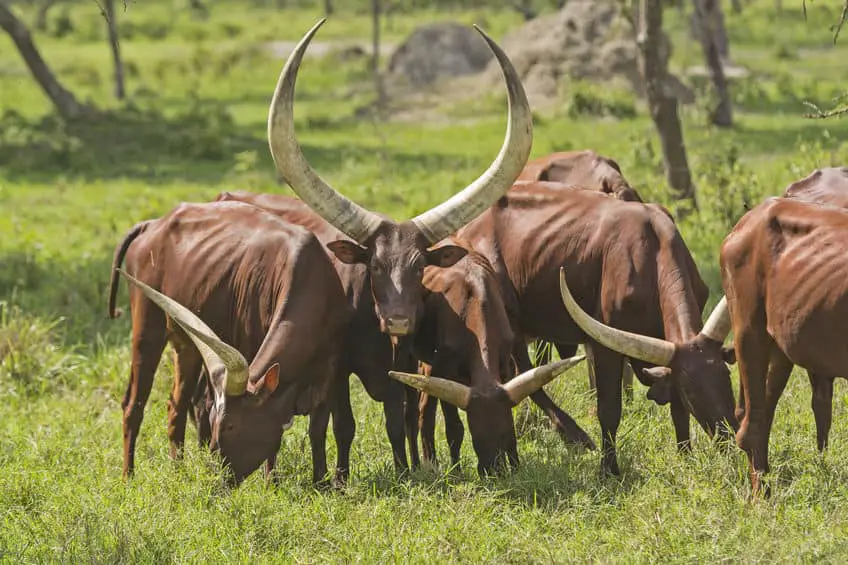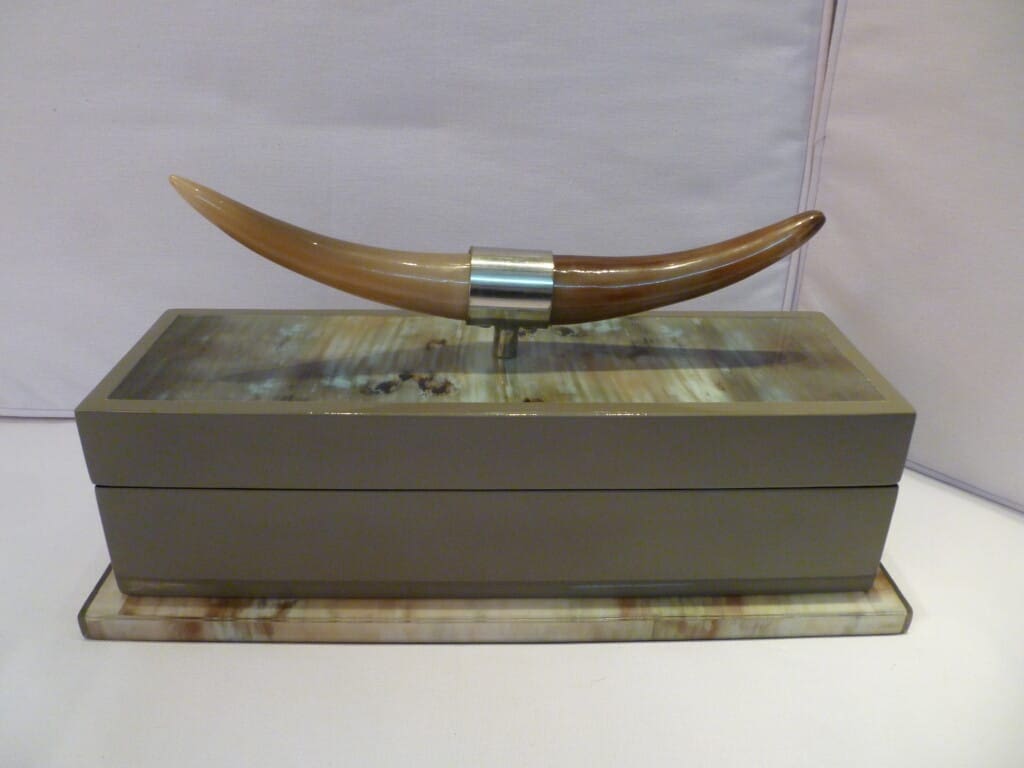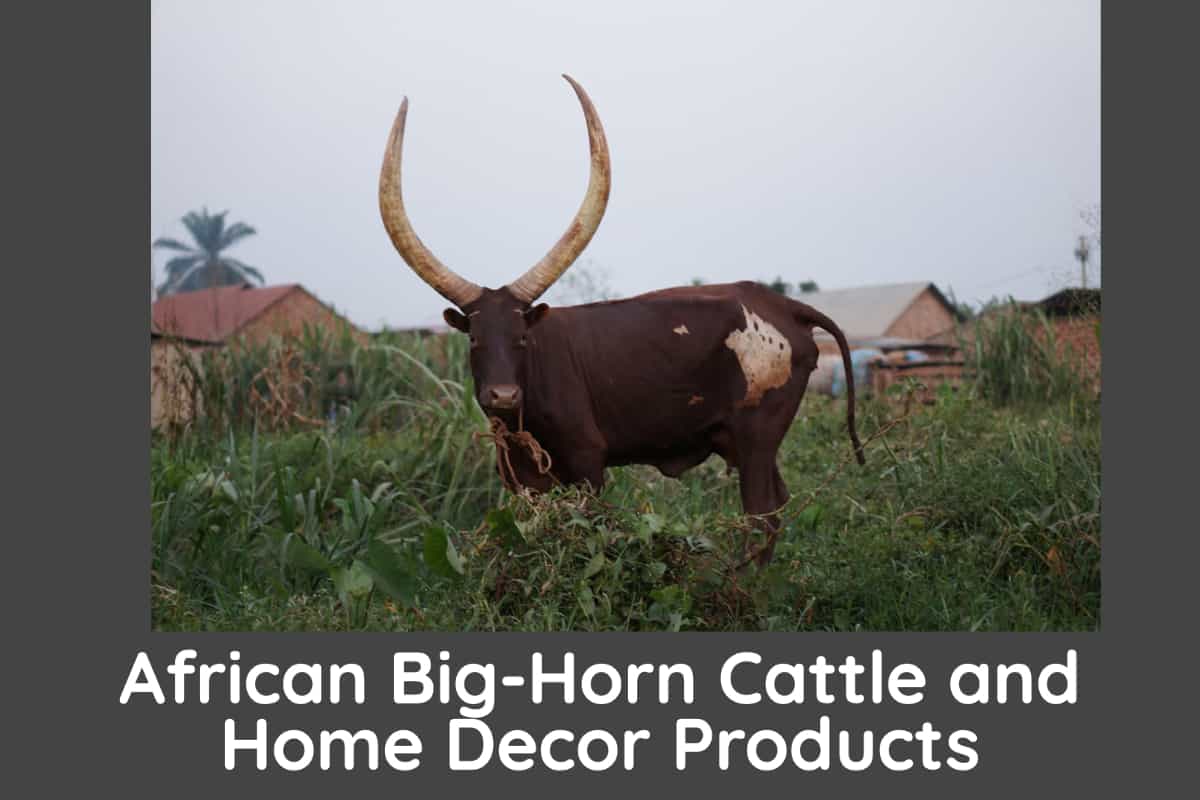The Ankole-Watusi big-horned African cow is a striking animal that has extremely long and elegant horns. The horns for these big-horned cows are imported into Vietnam, where a lot of home decor objects and jewelry is manufactured.
The Ankole-Watusi big-horn African cow is a medium-sized cattle that has very longhorns. These cows are found mainly in Africa. The cow is not an endangered species, so cows are sold as meat, and the horns are also sold to make home decor and jewelry items. This ensures that every part of the cow is somehow used and nothing goes to waste.
Table of Contents
- What is the Ankole-Watusi Big-horned Cow?
- Fun Facts About the Ankole- Watusi Big-horn Cows
- The Ankole-Watusi Cattle Horns
- The Ankole -Watusi Horns And Vietnam’s Horn Village
- Home Decor Products for the Ankole-Watusi Cattle Horns
- Frequently Asked Questions
- Related Questions
The Ankole-Watusi big-horned cow is considered an important domesticated animal in many parts of Africa. The cattle also have a very interesting history.
What is the Ankole-Watusi Big-horned Cow?
The Ankoloe-Watusi big-horned cow is, as the name implies, a medium-sized cow that has two very large diameter horns on the top of its head. These cows are often called African longhorn cows as they can be mainly found in Africa.
History of the Ankole-Watusi Big-horned Cow
The long-horned cow was first known in Egypt as early as 4000 B.C. You can see pictographs of the cows in some of the ancient Egyptian pyramids. Slowly, over a period of 2,000 years, these cattle started to migrate south to Africa from the Egyptian Nile area.
By 2,000 BC some other cattle (Longhorn Zebu) from Pakistan and India also reached Africa and this breed of cattle was interbred with the Egyptian cattle. This produced a new breed of African cattle which is known today as the Ankole-Watusi big-horned cow.
These cattle have been interbred for centuries, so there are variations of the cows in different parts of Africa. In Uganda, the Nikole tribe called their cattle Ankole; in Rwanda and Burundi, they call it Watusi. Hence, the name Ankole-Watusi is a combination of both names.

The Sacred Ankole-Watusi Cow
Traditionally, the Ankole-Watusi big-horned cow was considered to be a sacred animal. The cows supplied some milk to the owners, but their milk output was very little compared to other cattle brands. For some time, the cows were rarely killed for their meat, though their meat is said to have a lower fat content than some other cow meat.
Because of their appearance with the longhorns, some Ankole-Watusi cattle were exported from Africa to zoos and game parks worldwide. Most notable were the zoos and game parks in Germany,. Sweden and England imported the cattle in the late 19th and early 20th century.
Fun Facts About the Ankole- Watusi Big-horn Cows
Here are some fun facts about the Ankole-Watusi Big-horn cows:
- A well-bred Ankole-Watusi appears elegant and graceful.
- The cattle may be spotted or a solid color.
- Horns are long and symmetrical, with the base size in proportion to the horn length. Circle shapes on the horns are preferred.
- The Ankole-Watusi cow weighs 800 to 1200 pounds. The bulls weigh 1000 to 1600 pounds. The newborn calves weigh 30 to 50 pounds.
- During the daytime, the baby calves sleep with an “auntie” cow for protection. At night, the herd will sleep with the baby calves in the group’s center and the larger cows in the outer ring. The larger cows will use their horns to protect the herd.’
- The horns on the full-grown cows or bulls are formidable weapons against any threat or intruder.
- A typical cow only produces about 2 pints of milk per day.
- The milk is about 10 percent fat.
- They are tolerable to extremes in climate and weather and do well in extremely hot weather.
- The meat is said to be low in fat and has lower cholesterol than other forms of commercial beef.
- The cattle are not on the endangered list.
- The cattle are considered to be one of the earliest confirmed domesticated animals. Records show that some version of the cattle has been domesticated at least 6,000 years.

The Ankole-Watusi Cattle Horns
The Ankole-Watusi cattle are not killed for their horns. In fact, today cattle are used as a source of beef, so the cows are killed to provide beef.
For many farmers in Africa, these cattle help provide them the income they need to be able to survive. They can sell not only the meat but also the horns and other parts of the cow.
It can be said that this unique cattle gives its hide for leather and its horns. The Ankole-Watusi horns can be cut, polished, and made into a variety of items for home decor products and jewelry.
The Ankole -Watusi Horns And Vietnam’s Horn Village
What may surprise many people is that Vietnam imports a lot of Ankole-Watusi horns to be used in the horn village outside Hanoi, Vietnam. The handicraft village is a traditional Vietnamese village that has been using buffalo horns, bones, and other natural materials to make home decor objects, cups, and jewelry for hundreds of years.
In recent years, Vietnam has imported many of the Ankole-Watusi horns to be used mainly in jewelry manufacturing. The horns are brought into Hanoi unpolished. The factories will then take the horns and polish them as they would any buffalo or other horns that find locally in Vietnam.
One reason they import these horns is that the horns for the Ankole-Watusi cattle are usually white or cream, and this is a color that many people prefer for jewelry and home decor items.
Even though Vietnam needs to import these horns, they have a competitive advantage as they have the knowledge and equipment to be able to handle the manufacturing of the horns. Many of the factories have CNC machines, meaning the horns can be cut into intricate shapes and sizes.
If you are interested in finding out more about Vietnam’s Handicraft villages and in particular, the horn village, you can read our blogs on Top 10 Vietnamese Handicraft Villages, And Why They’re Still Important by clicking here.

Home Decor Products for the Ankole-Watusi Cattle Horns
Many items can be used for the manufacturing of the Ankole-Watusi cattle horns. Here are some of the items we have used to manufacture with the horns:
- Table legs – We have used the horns for legs for a table. One of the things you need to do for these legs is that we need to pick out the legs that are similar so that the table will be steady enough.
- Artifacts – We have also used the horns as artifacts. The horns, once polished, can make some beautiful artifacts.
- Lamps – We have cut and used part of the horn as a lamp base. Each piece is polished so that the natural beauty of the horn will show through.
- Decoration – We have used some horns as decorative elements, such as a box or tray handle.
- Jewelry – One of the significant ways that the Ankole-Watusi cow horns are used is to make all kinds of jewelry—everything from necklaces to bracelets.
The Ankole-Watusi big-horned African cow is a beautiful animal. Not only is the animal rich in history, but its horns are able to produce some fabulous home decor and jewelry products.
Find out more about how Mondoro can help you create, develop, and manufacture excellent home decor and furniture products – don’t hesitate to contact me, Anita. Check out my email by clicking here or become a part of our community and join our newsletter by clicking here.
Mondoro gives out a FREE Lookbook to anyone interested. You can receive a copy of our latest Lookbook by clicking here.
Listen to our Podcast called Global Trade Gal. You can find it on all major podcast platforms. Try out listening to one of our podcasts by clicking here.
Subscribe to our Mondoro Company Limited YouTube Channel with great videos and information by clicking here.
Frequently Asked Questions
What is the Ankole-Watusi Big-horned African Cow, and where is it primarily found?
The Ankole-Watusi is a medium-sized breed of cattle known for its distinctively long and elegant horns. It is primarily found in Africa, particularly in regions where the Ankole and Watusi tribes reside.
How long are the horns of the Ankole-Watusi Big-horned African Cow?
The Ankole-Watusi is characterized by its remarkably long horns, which can span up to several feet in length. These horns are one of the key features that make this breed visually striking.
Why are the horns of the Ankole-Watusi imported into Vietnam?
The horns of the Ankole-Watusi are imported into Vietnam for various purposes, primarily for the creation of home decor products and jewelry. Skilled artisans in Vietnam transform these horns into aesthetically pleasing and culturally significant items.
Is the Ankole-Watusi an endangered species?
No, the Ankole-Watusi is not considered an endangered species. This breed is actively bred and raised for various purposes, including meat production. The non-endangered status allows for the sustainable use of the cow’s resources.
How are the Ankole-Watusi cows utilized to ensure minimal waste?
Every part of the Ankole-Watusi cow is utilized to ensure minimal waste. The meat is sold for consumption, and the horns are harvested for the creation of home decor items and jewelry. This sustainable practice aligns with ethical and responsible resource use.
What types of home decor products are made from Ankole-Watusi horns?
Ankole-Watusi horns are crafted into a variety of home decor products, including but not limited to sculptures, wall art, and functional items like utensils and bowls. The unique and distinctive shape of the horns adds a touch of African elegance to these products.
Are the Ankole-Watusi horns used in traditional or contemporary designs?
Artisans in Vietnam use Ankole-Watusi horns to create a diverse range of products, blending traditional craftsmanship with contemporary designs. This fusion results in home decor items that appeal to a broad spectrum of tastes and styles.
How are Ankole-Watusi horns transformed into jewelry?
Ankole-Watusi horns are carefully shaped and polished to create unique pieces of jewelry. The horns’ natural colors and patterns add to the individuality of each piece, making them sought-after accessories for those who appreciate distinctive and culturally inspired jewelry.
Can I be assured of the ethical sourcing of Ankole-Watusi products?
Responsible sourcing is a priority for many artisans and businesses dealing with Ankole-Watusi products. Ensuring ethical practices in sourcing helps support sustainable conservation efforts and promotes the welfare of the animals involved.
Where can one find Ankole-Watusi home decor products?
Ankole-Watusi home decor products can be found in specialty stores, online platforms, and artisan markets that focus on unique and culturally inspired items. These products often carry a blend of African heritage and modern design, making them distinctive additions to home interiors.
Related Questions
What is the Mother of Pearl Shell Used in Home Decor Products?
Mother of pearl, which is also known by the scientific name of nacre, is a pearl layer on the inner layer of the oyster shell. This pearl layer of the oyster is taken off the outer oyster shell. Then, the leftover inner pearl shell is cut into various small shapes and sizes to be then glued onto multiple home decor products such as mirrors, boxes, trays, and lamp bases.
You can learn more by reading our blog What is the Mother of Pearl Shell Used in Home Decor Products? by clicking here.
What is Spun Bamboo?
Spun bamboo was invented in Vietnam over 800 years ago as a way to give a cheaper alternative to the home decor and home utensil materials that were then being used. Spun bamboo is called spun bamboo as it is spun out pieces of bamboo, and then the bamboo pieces are glued together into a form. This production of spun bamboo helps women in these villages earn extra income. Spun bamboo is a great natural product and can be used in a variety of home decor and kitchen products.
To discover more about spun bamboo, you can read our blog on What is Spun Bamboo? Using Spun Bamboo in Product Development by clicking here.


